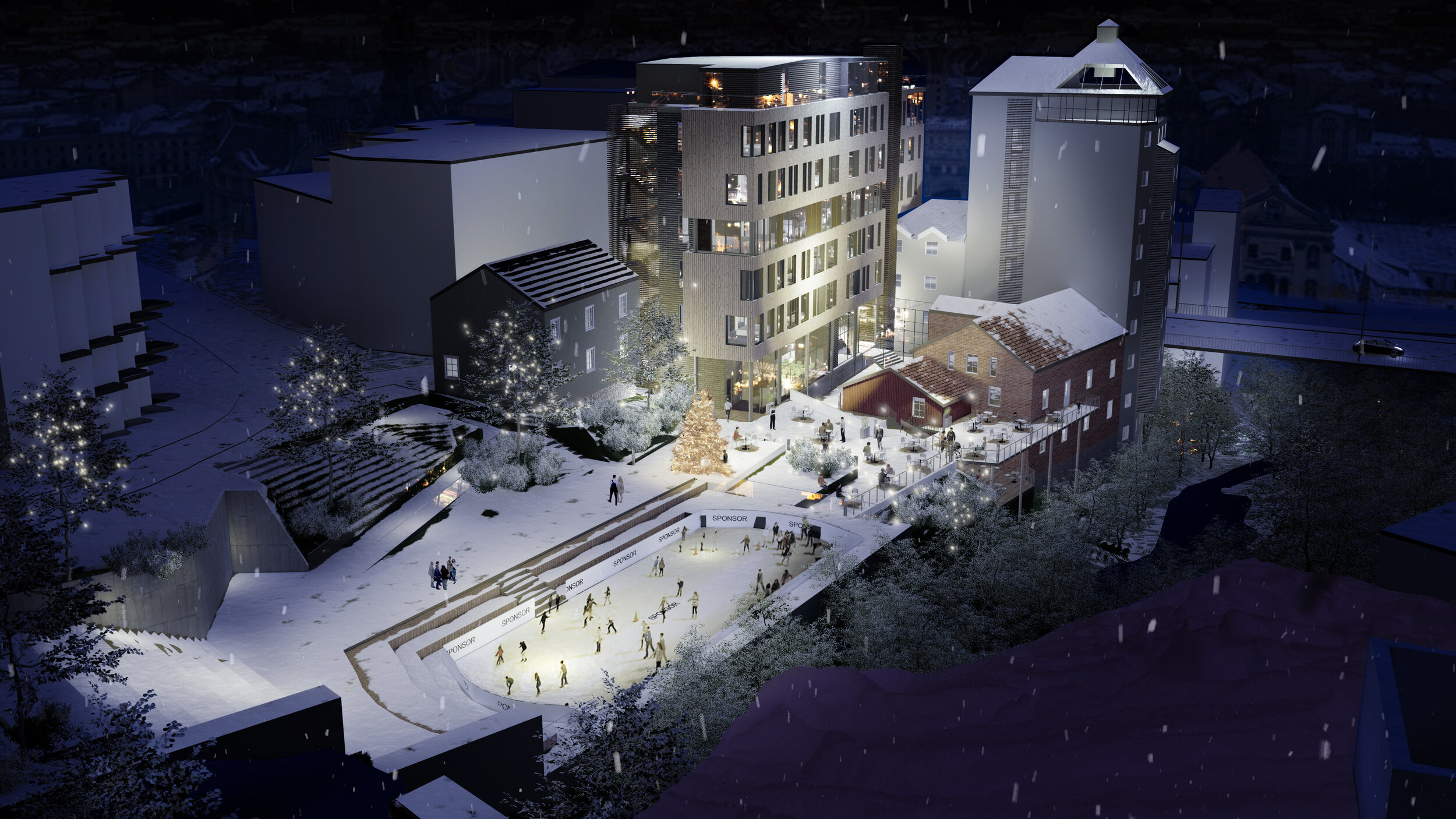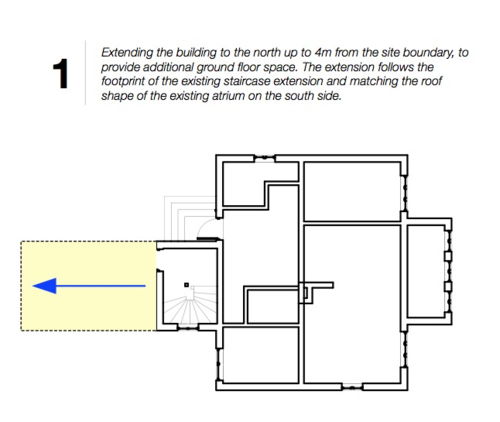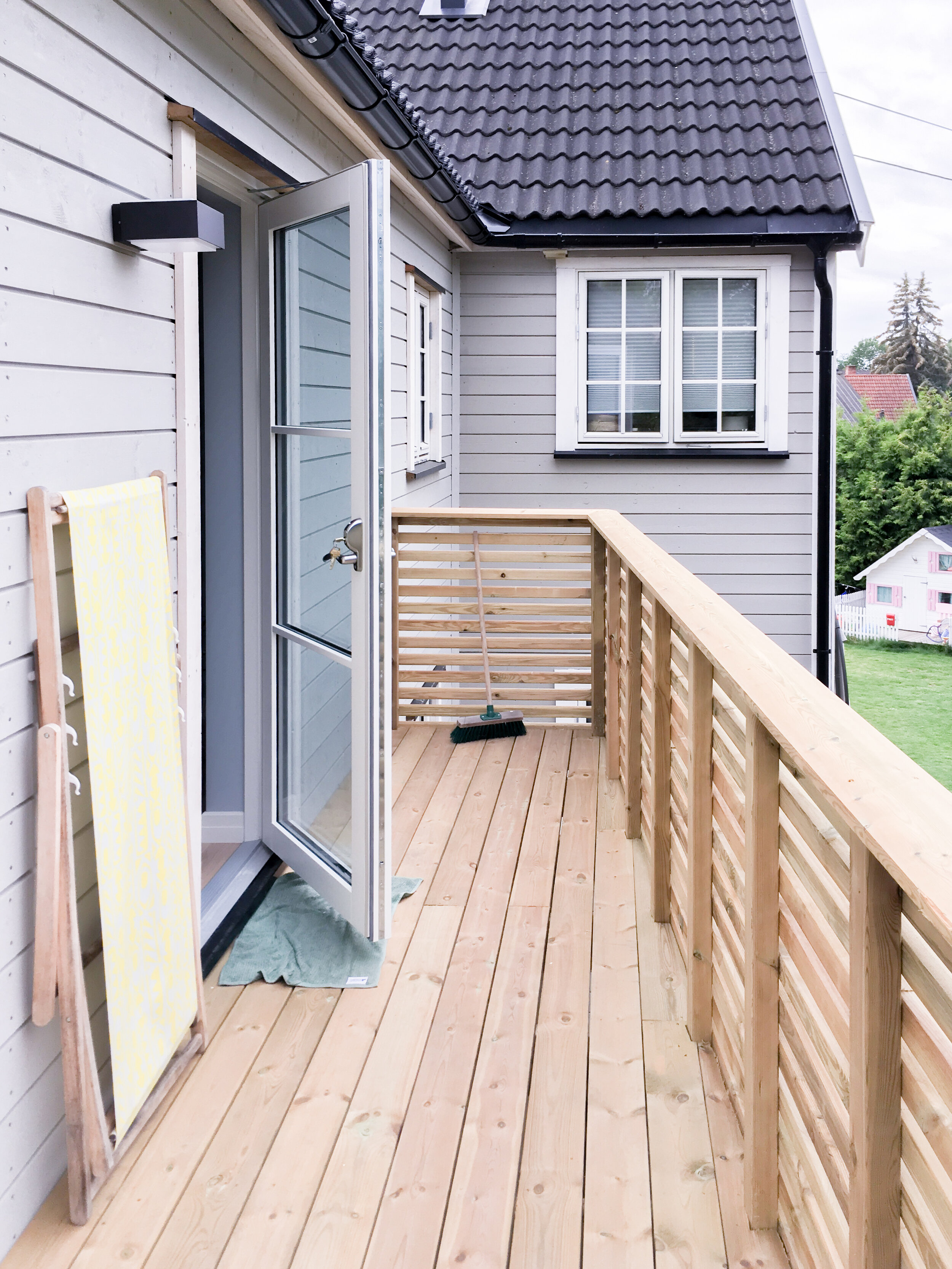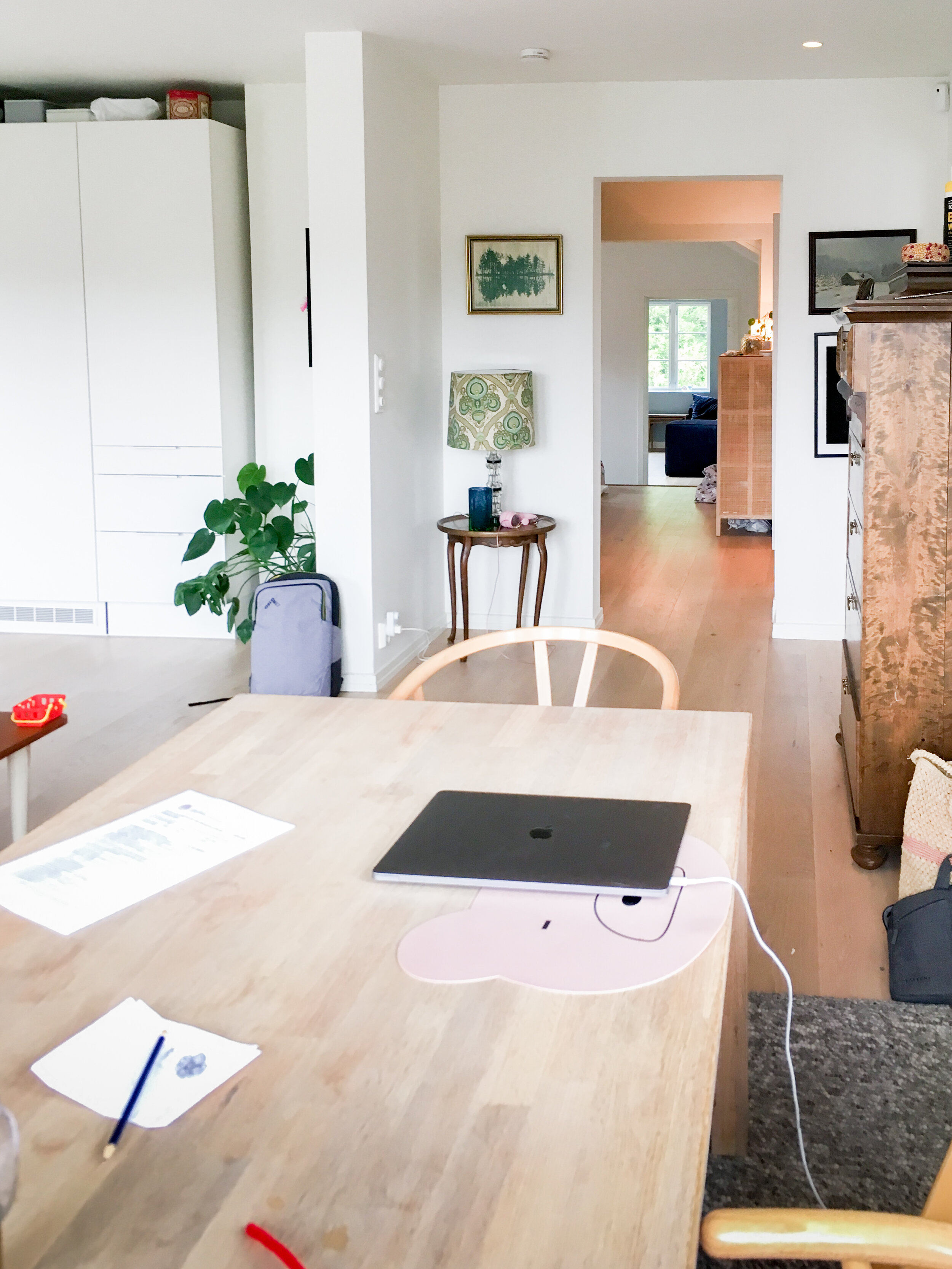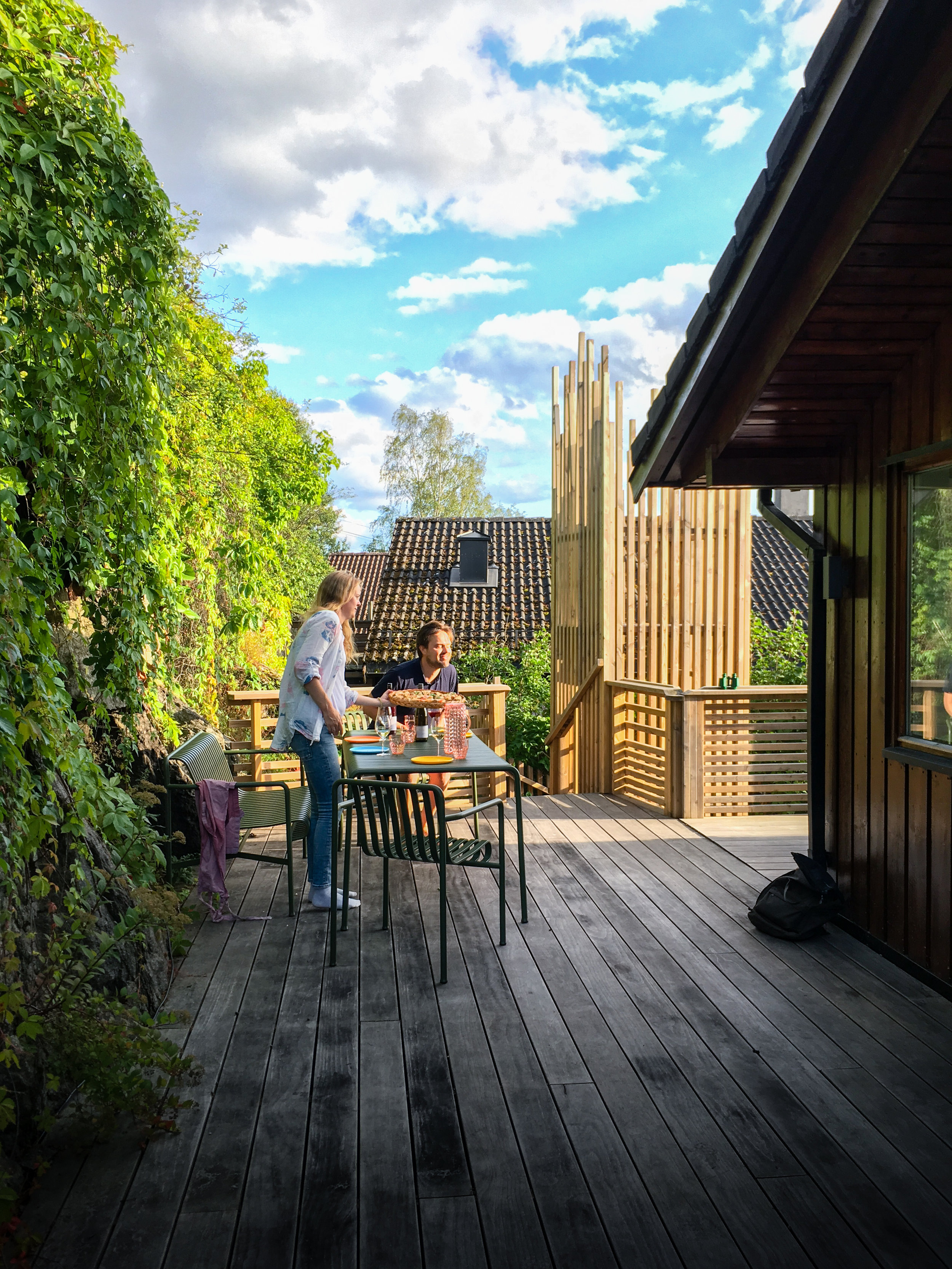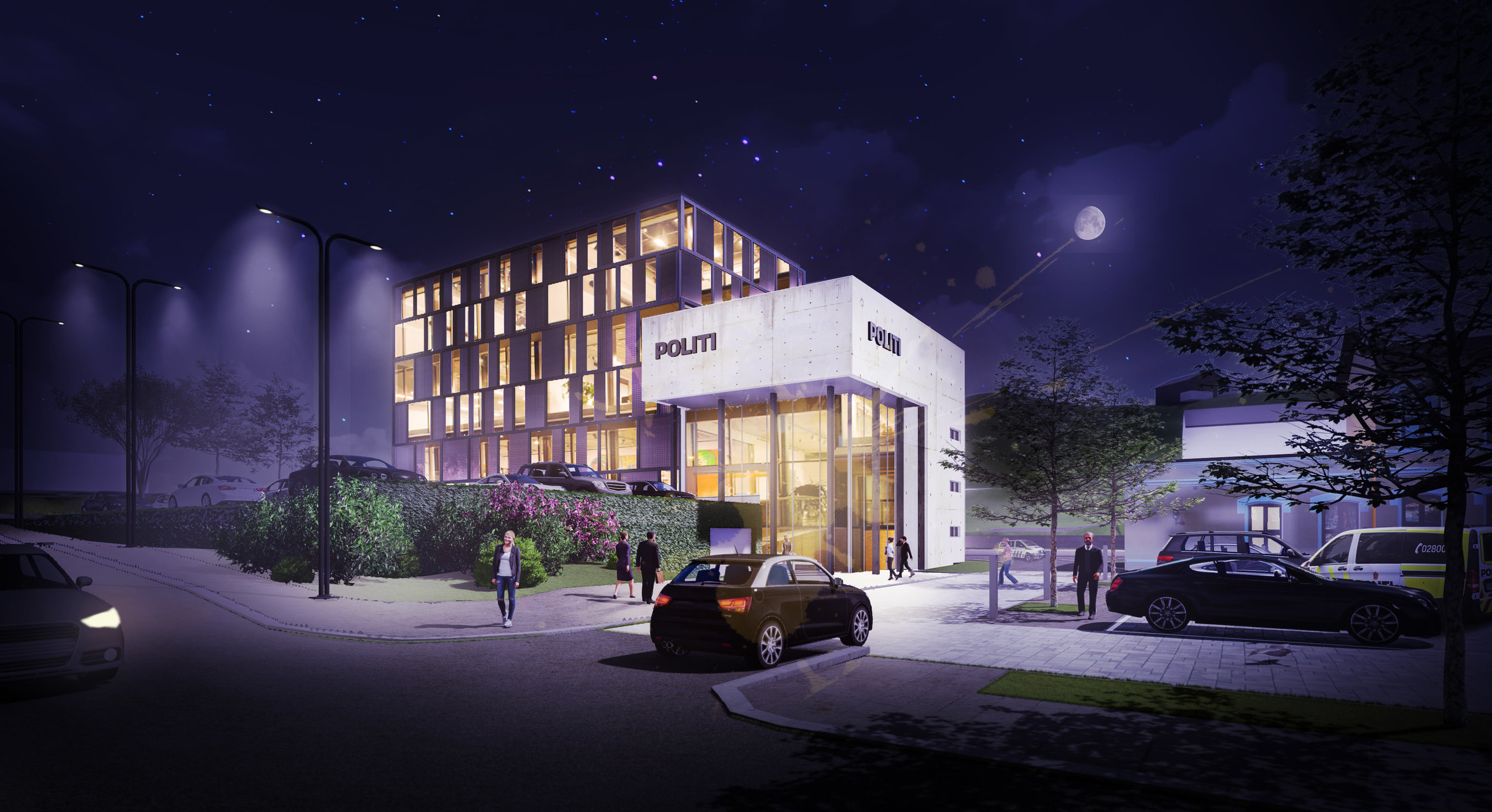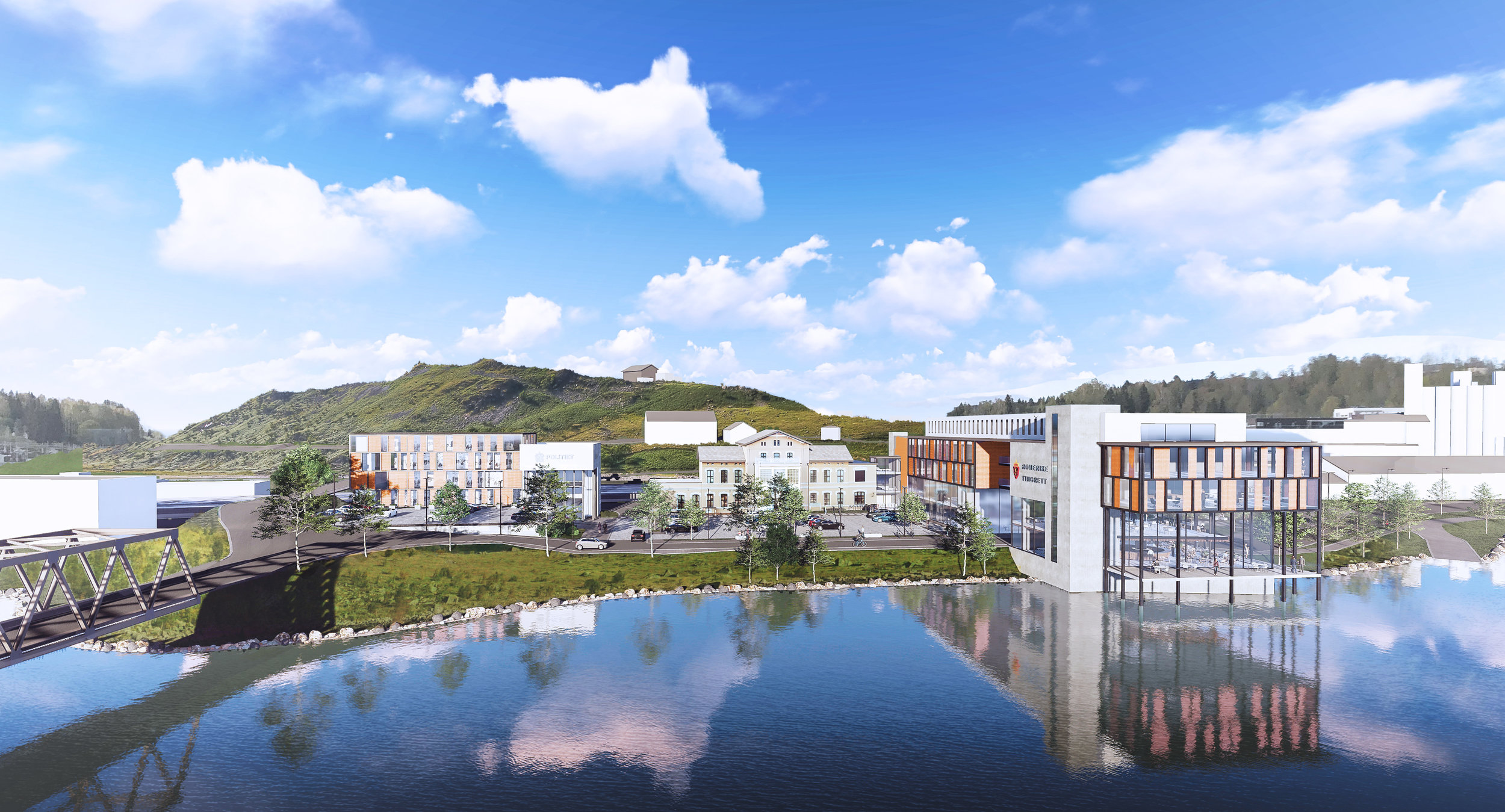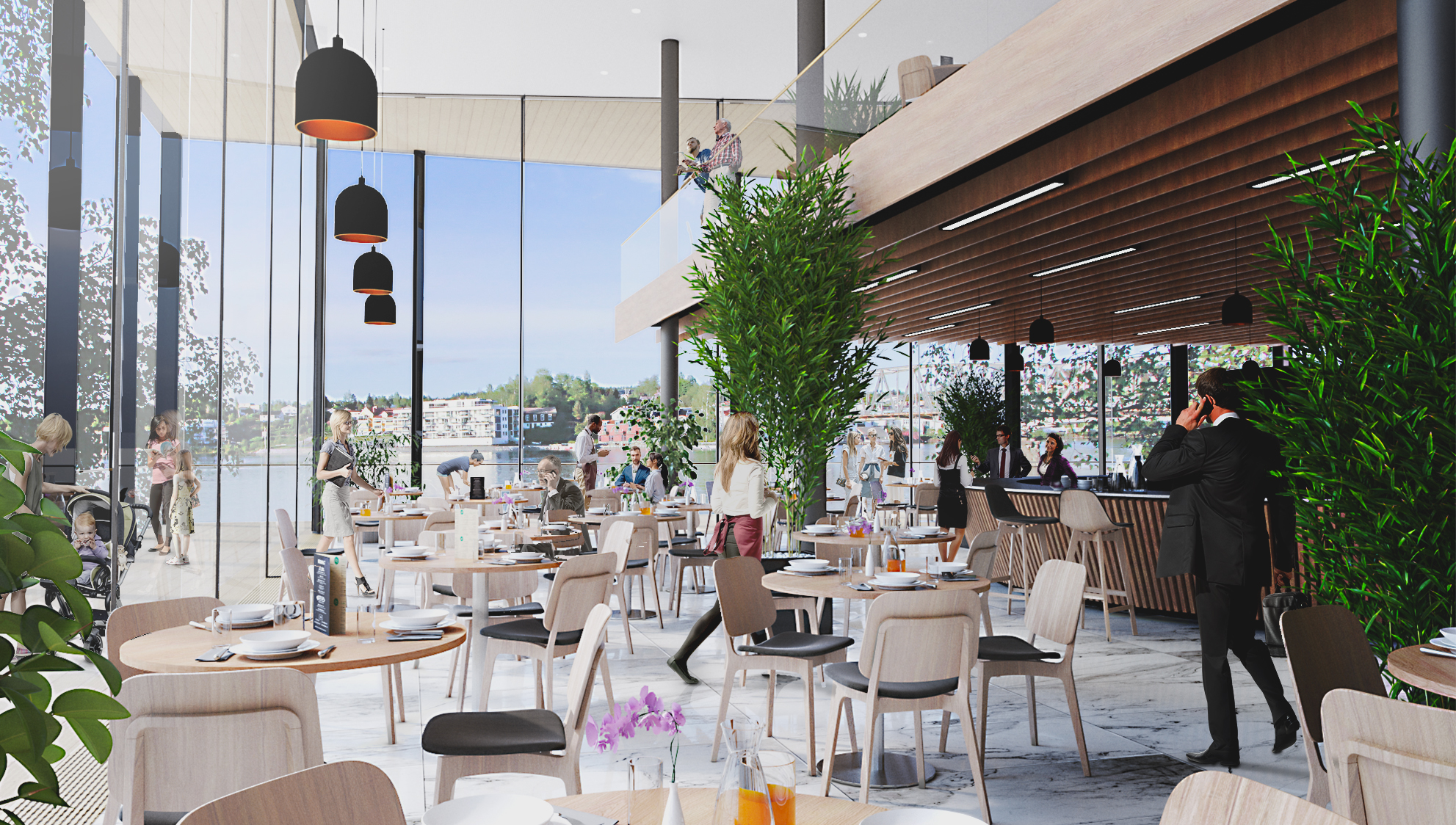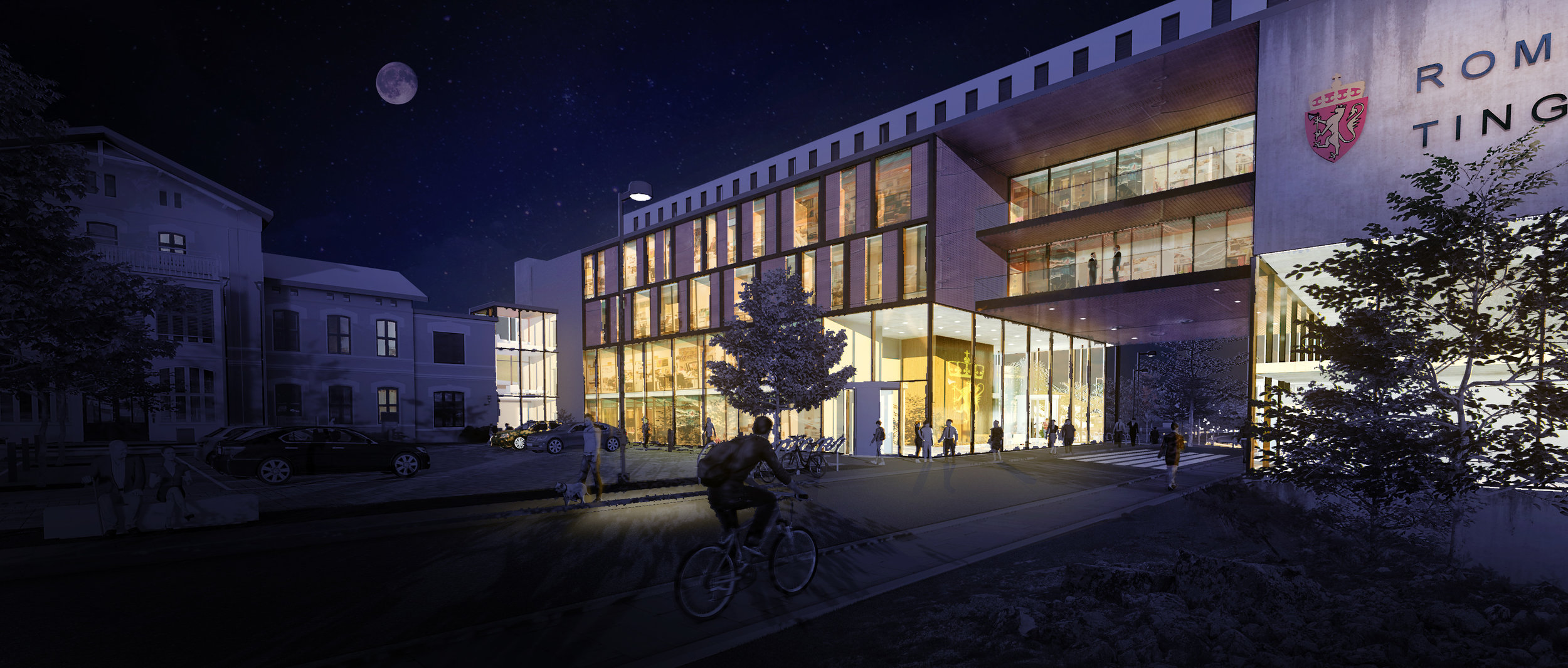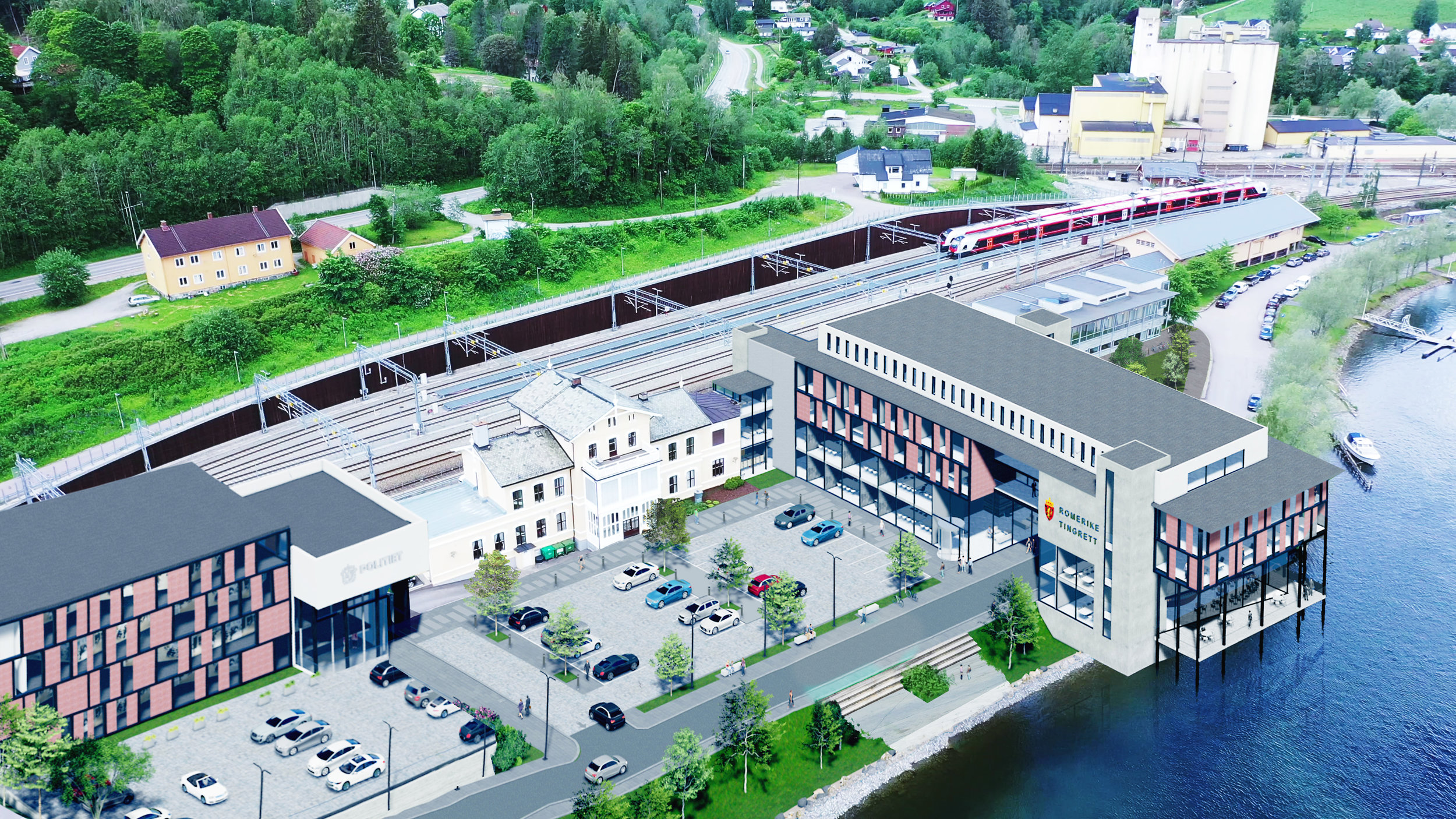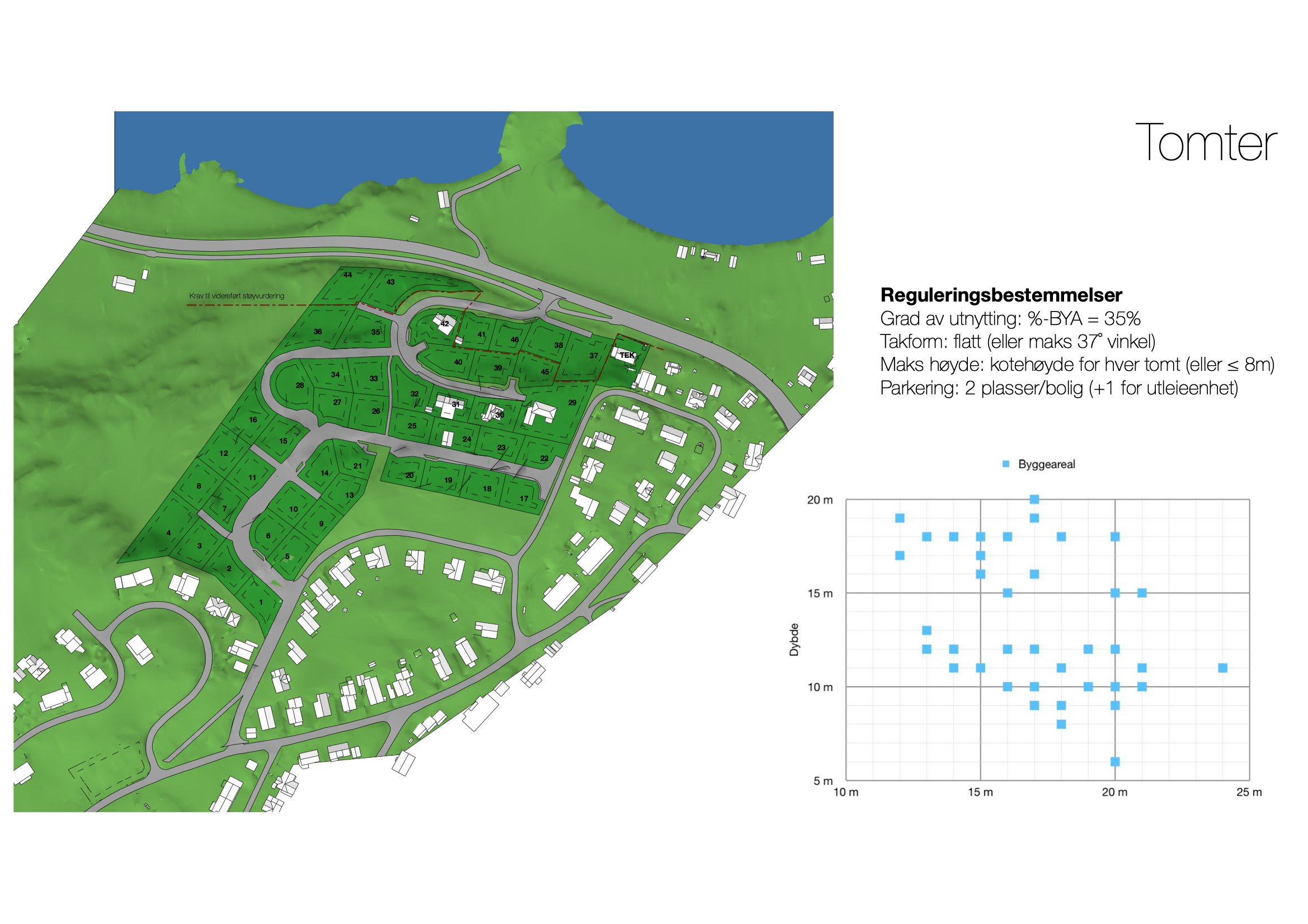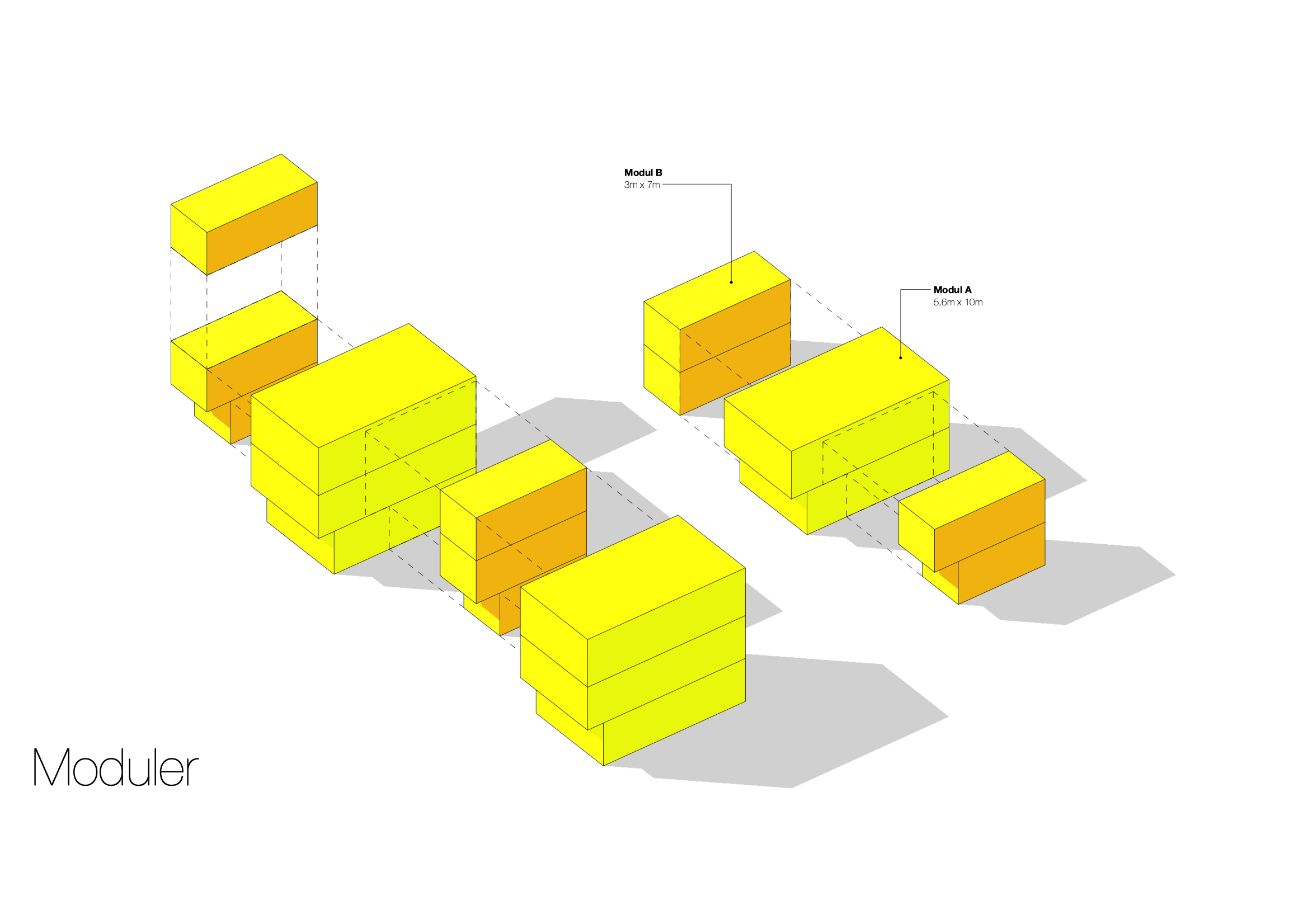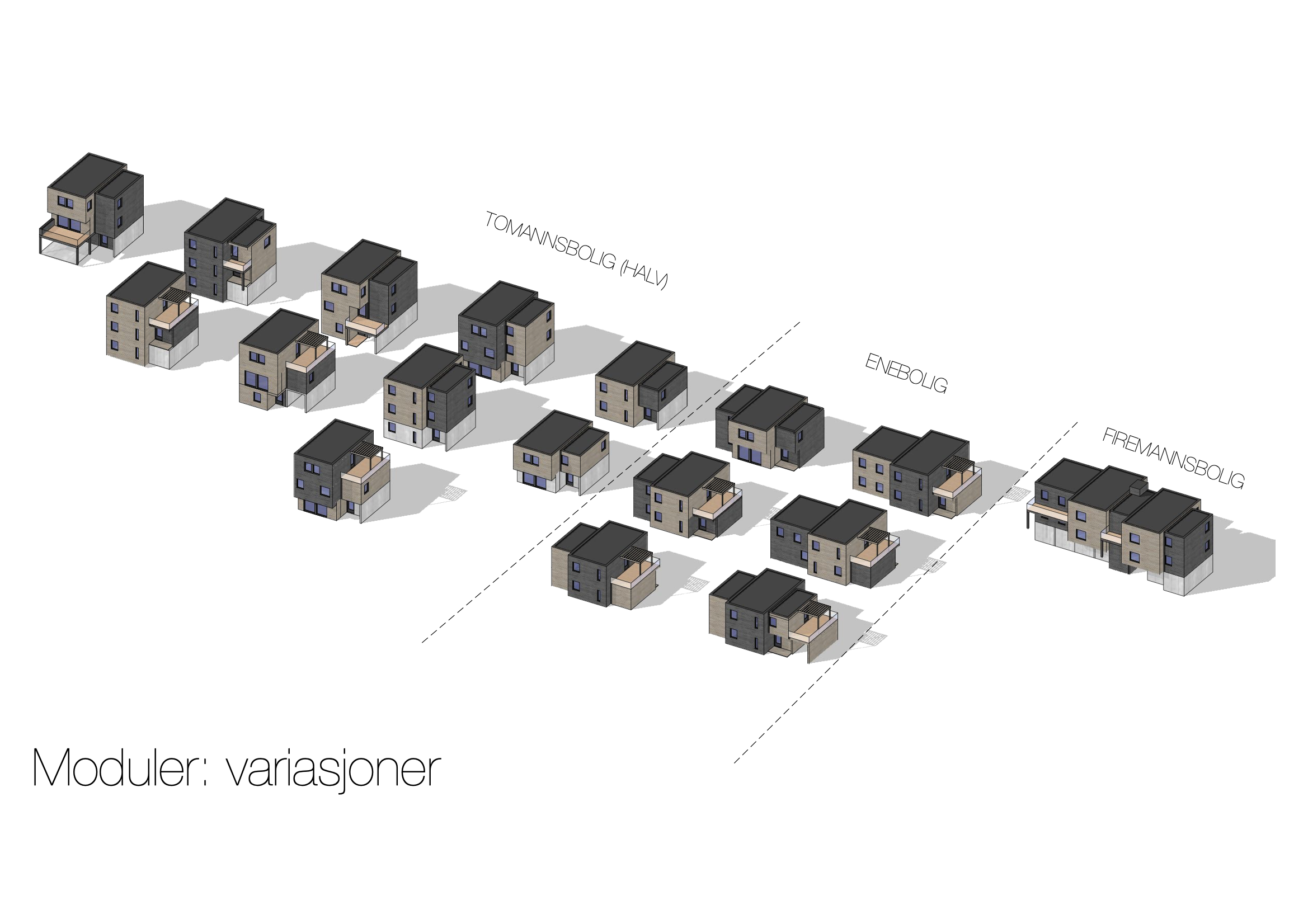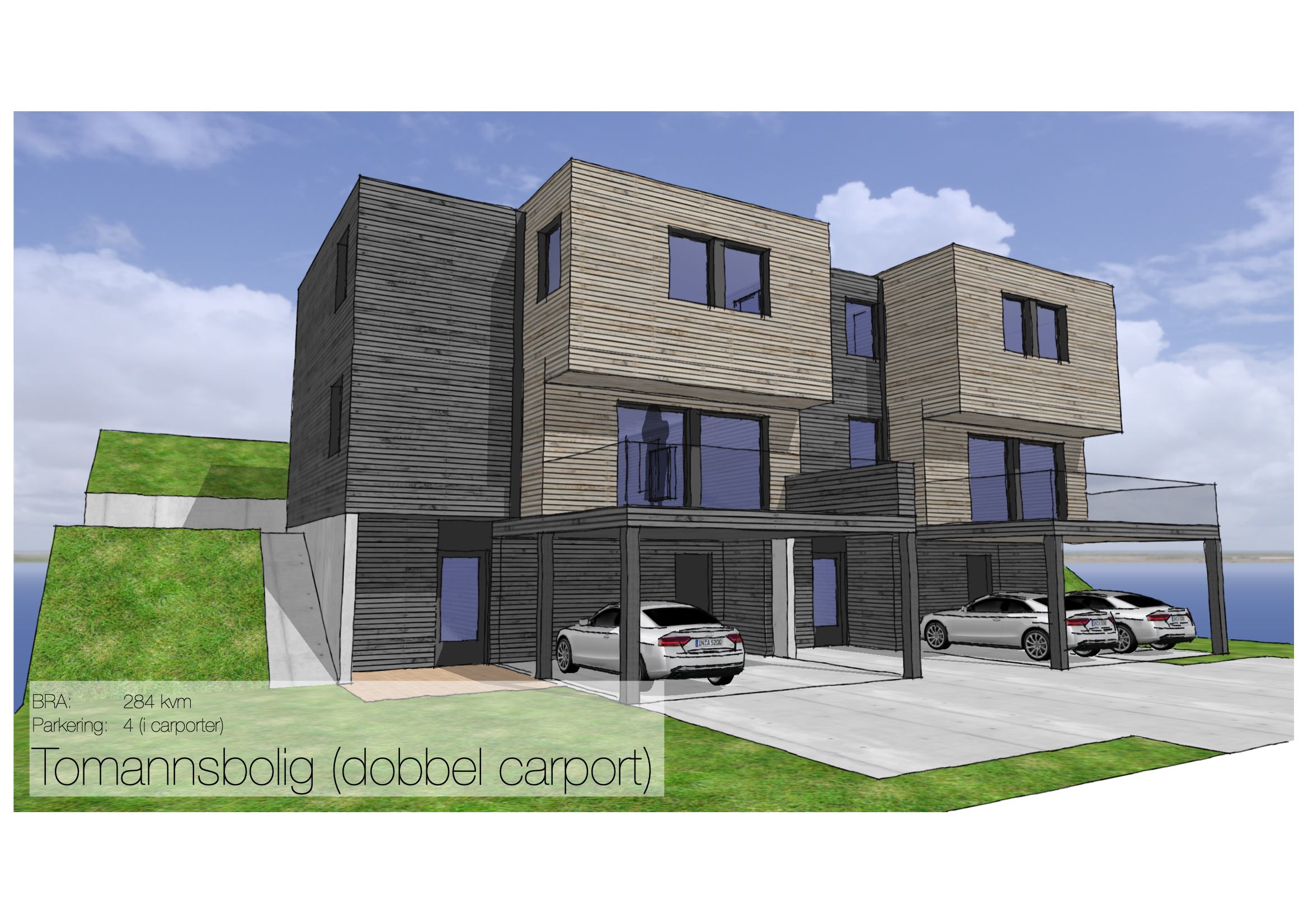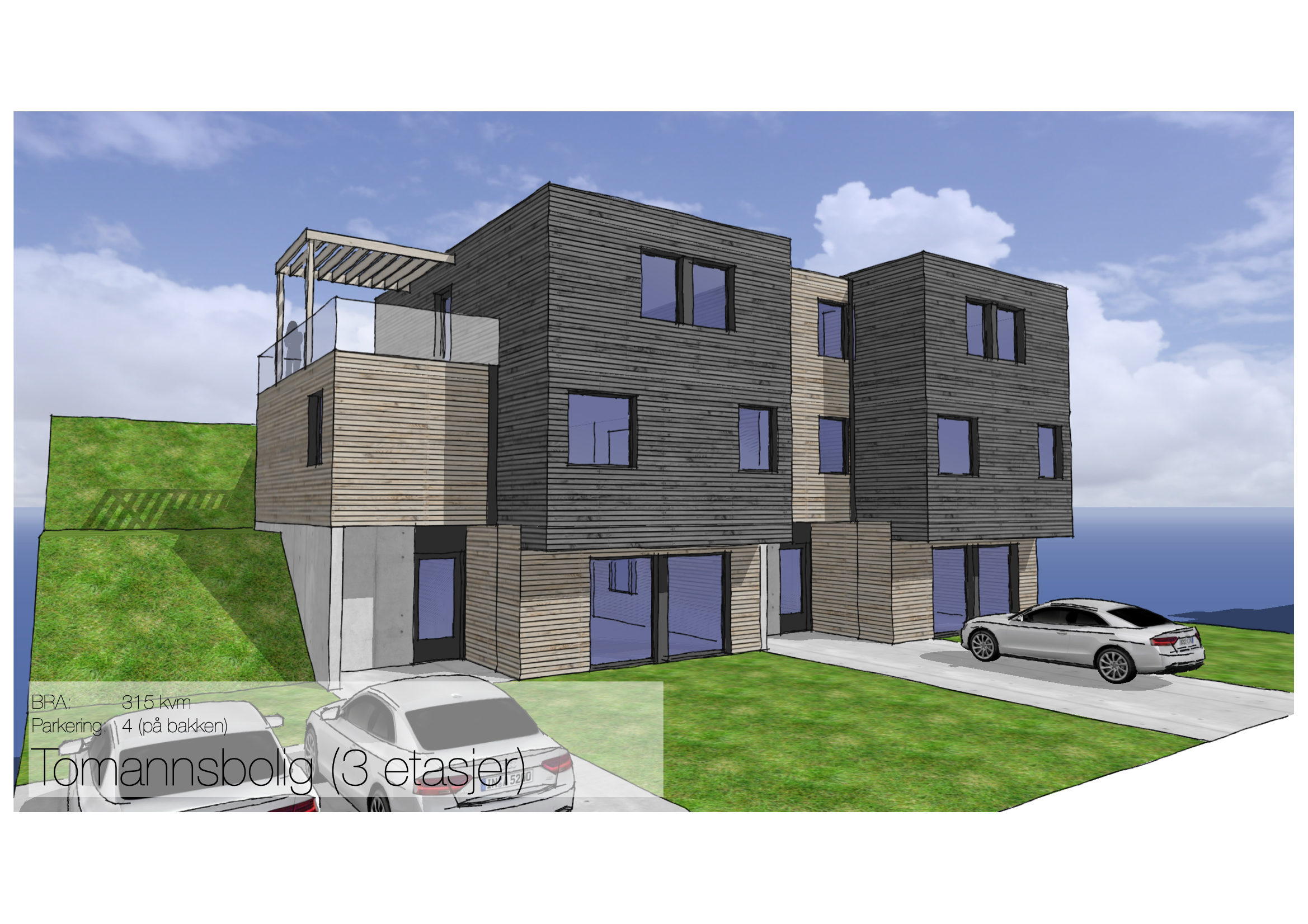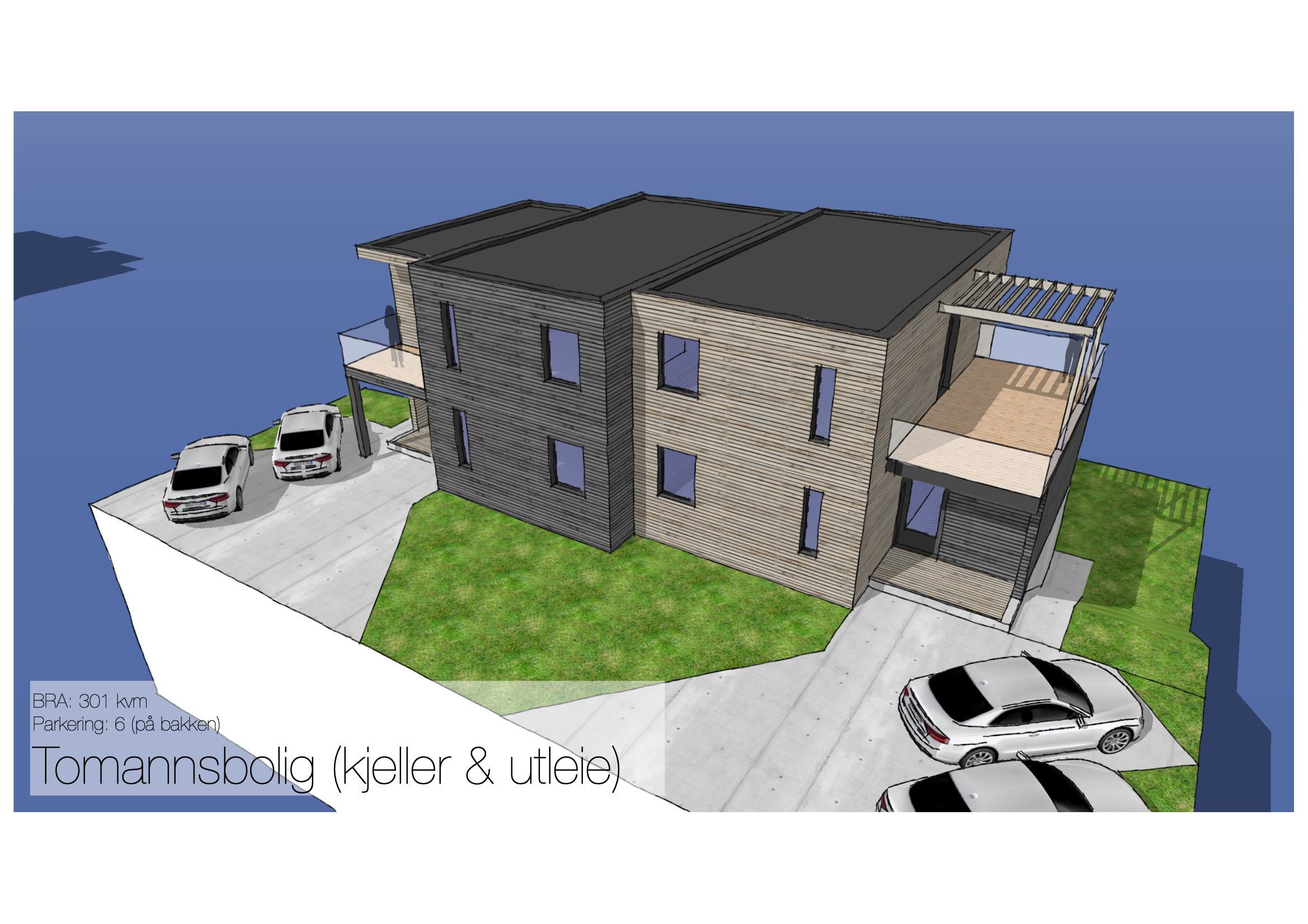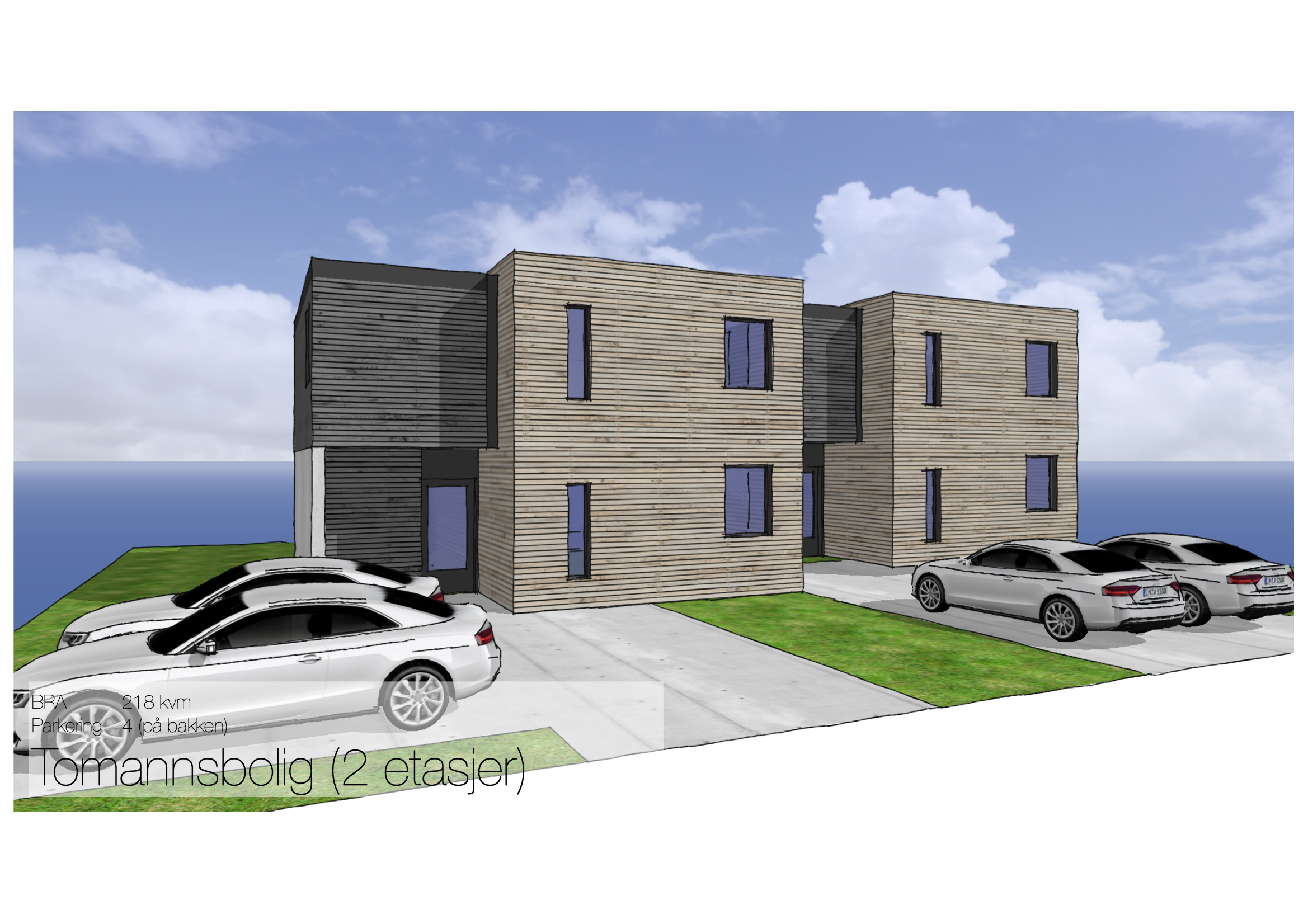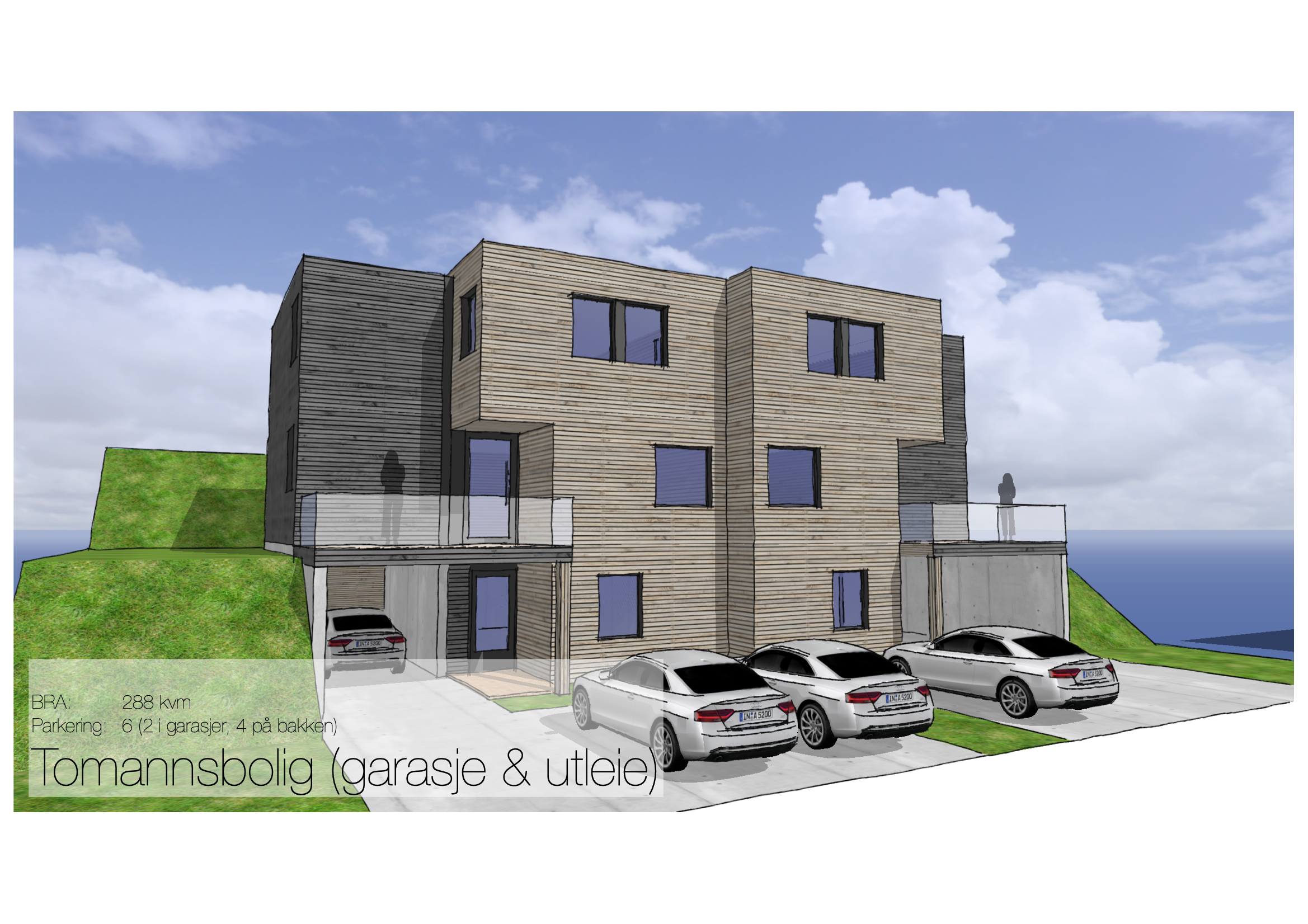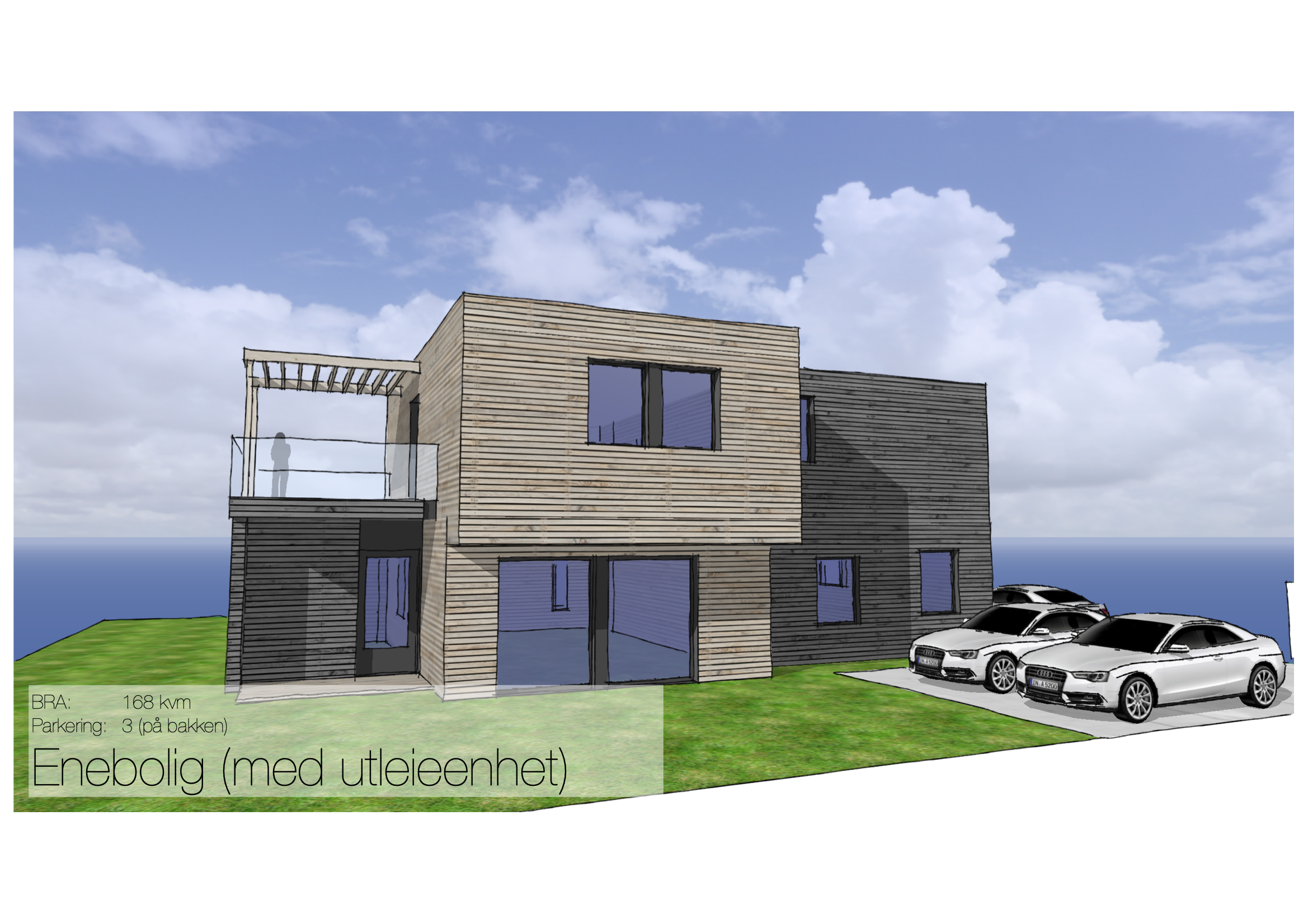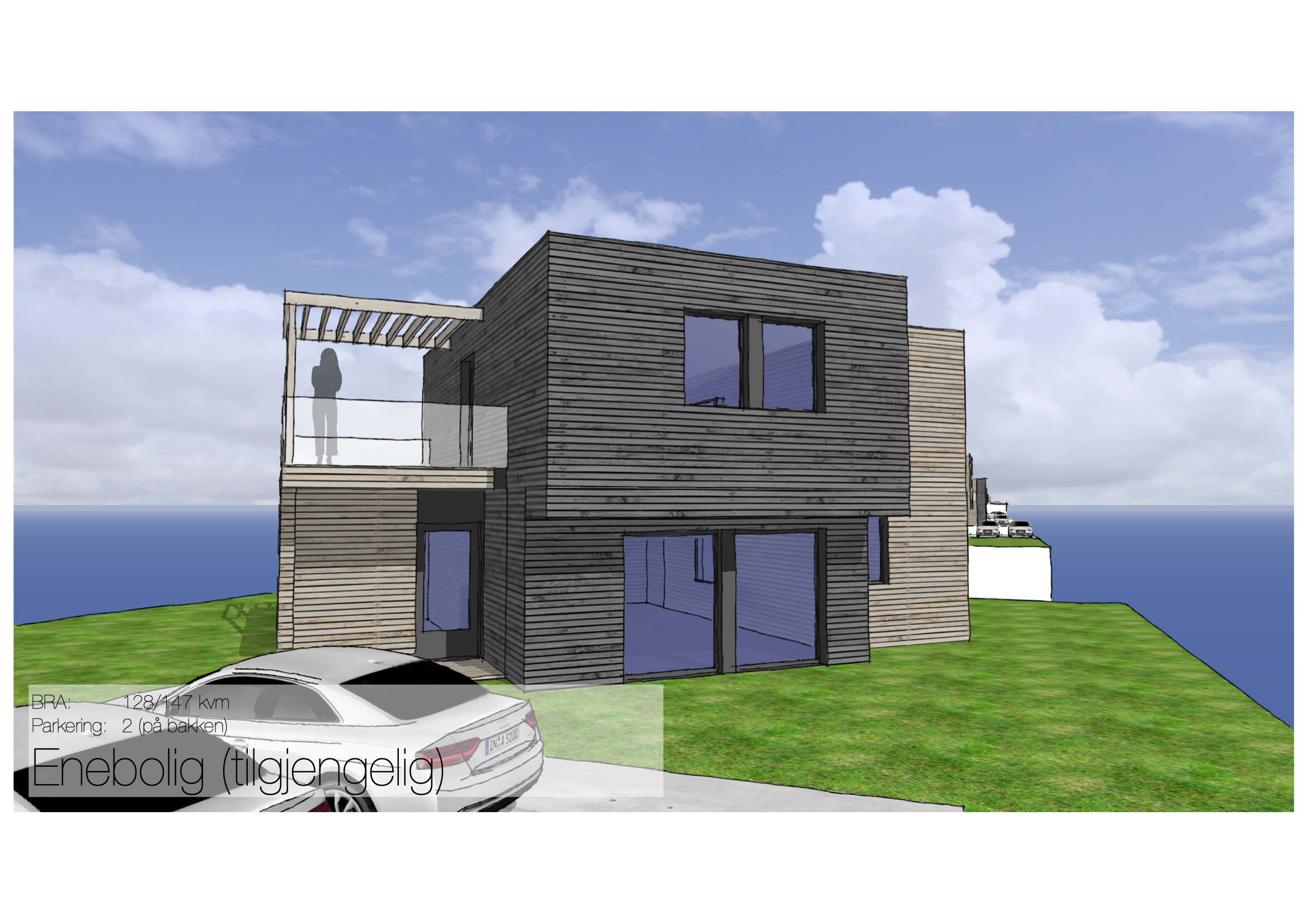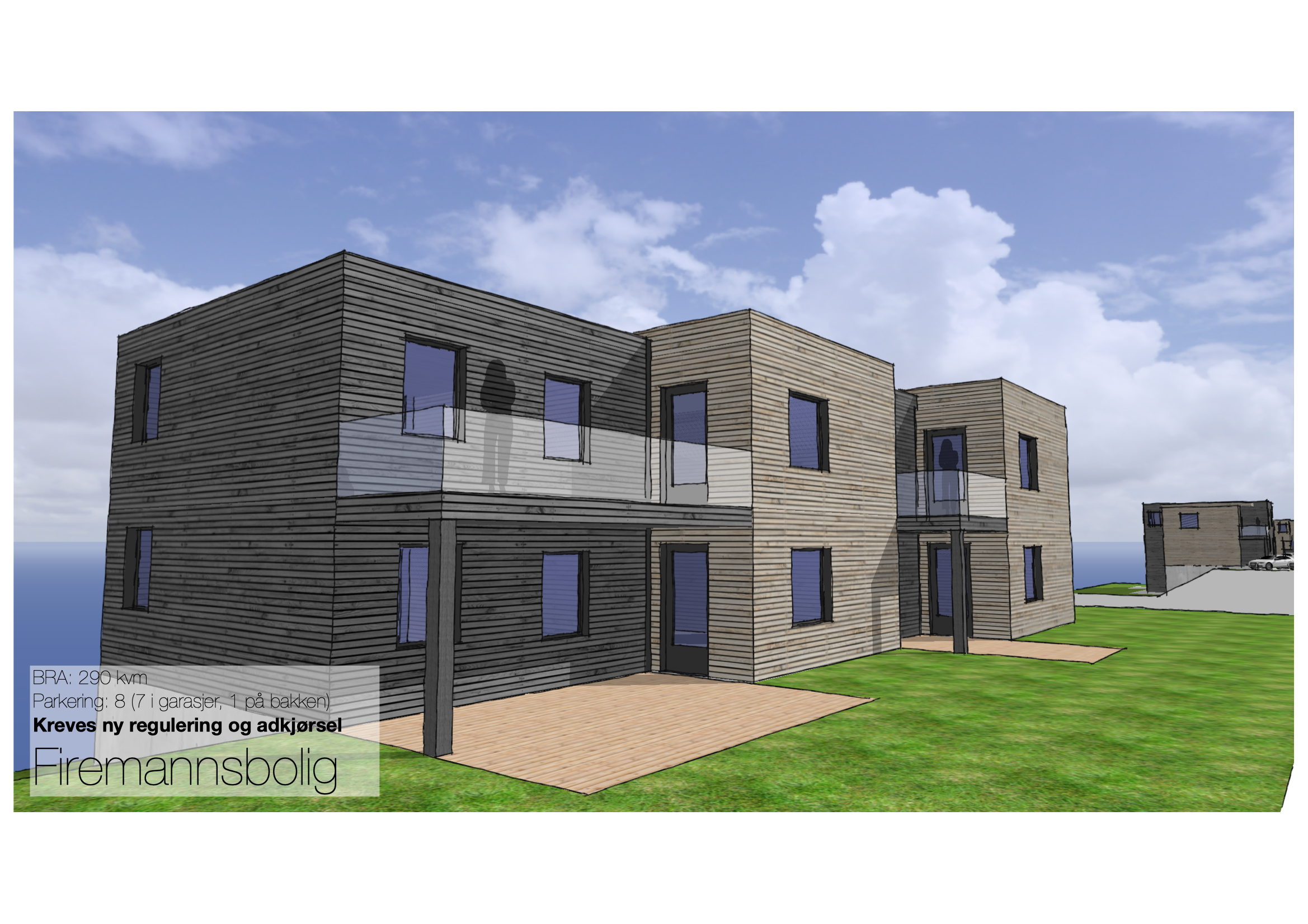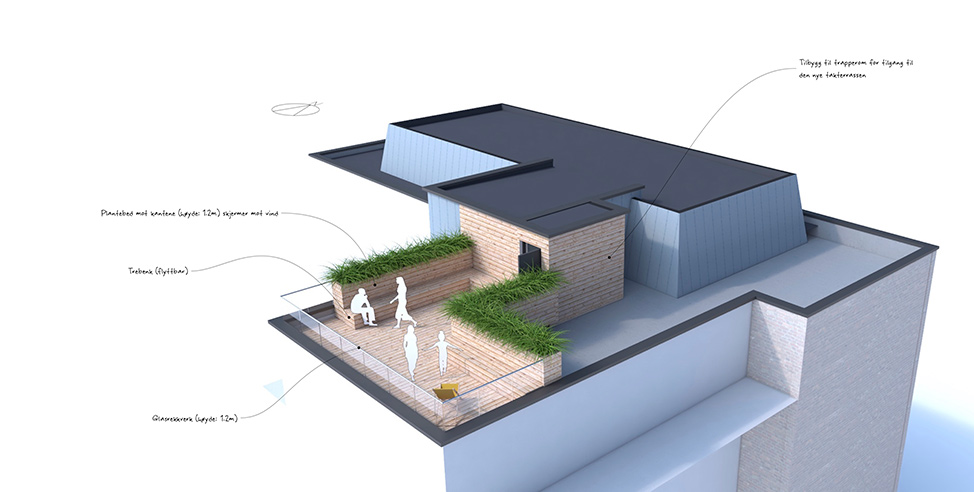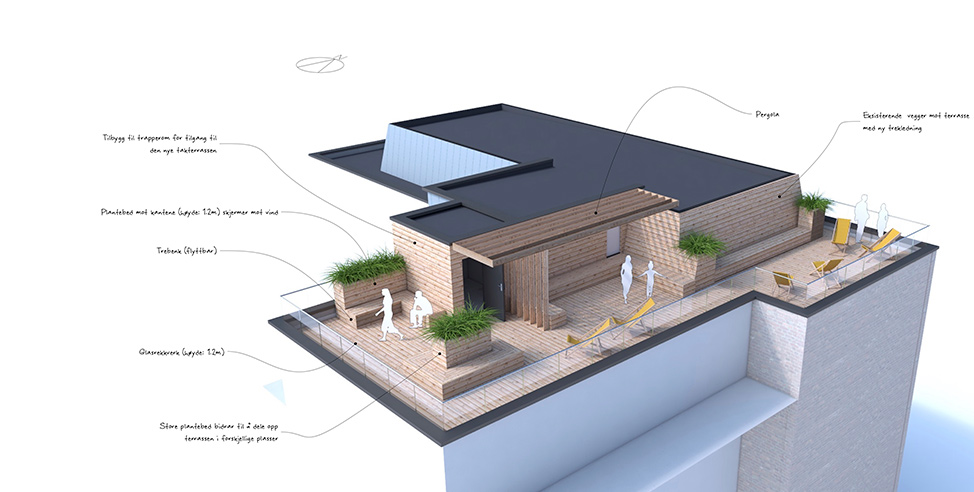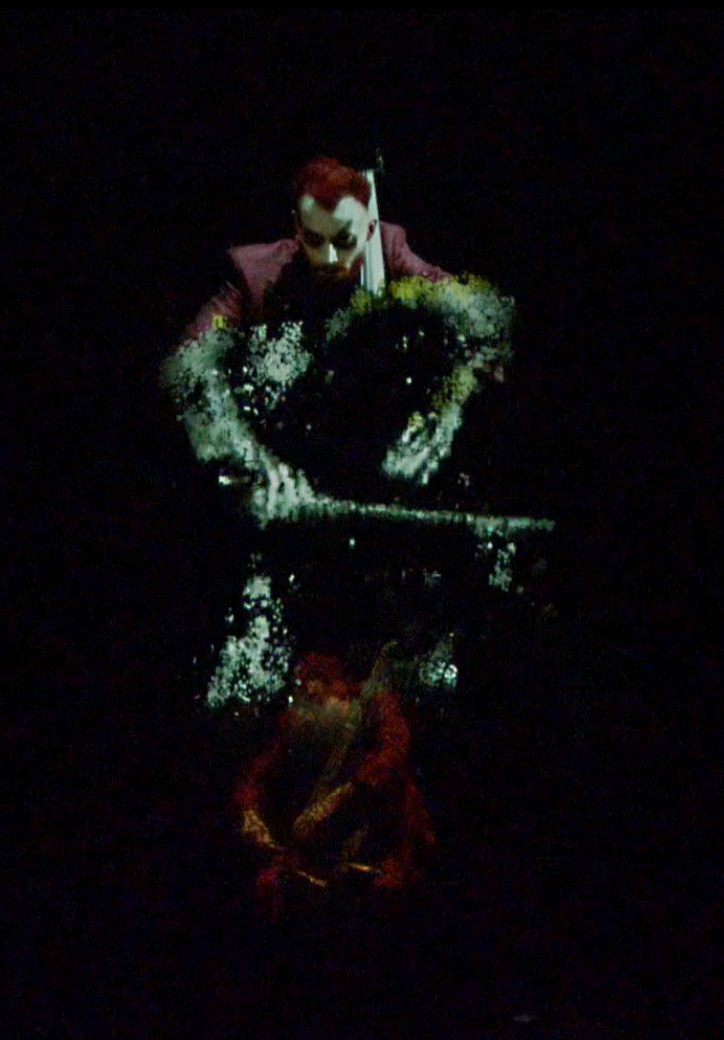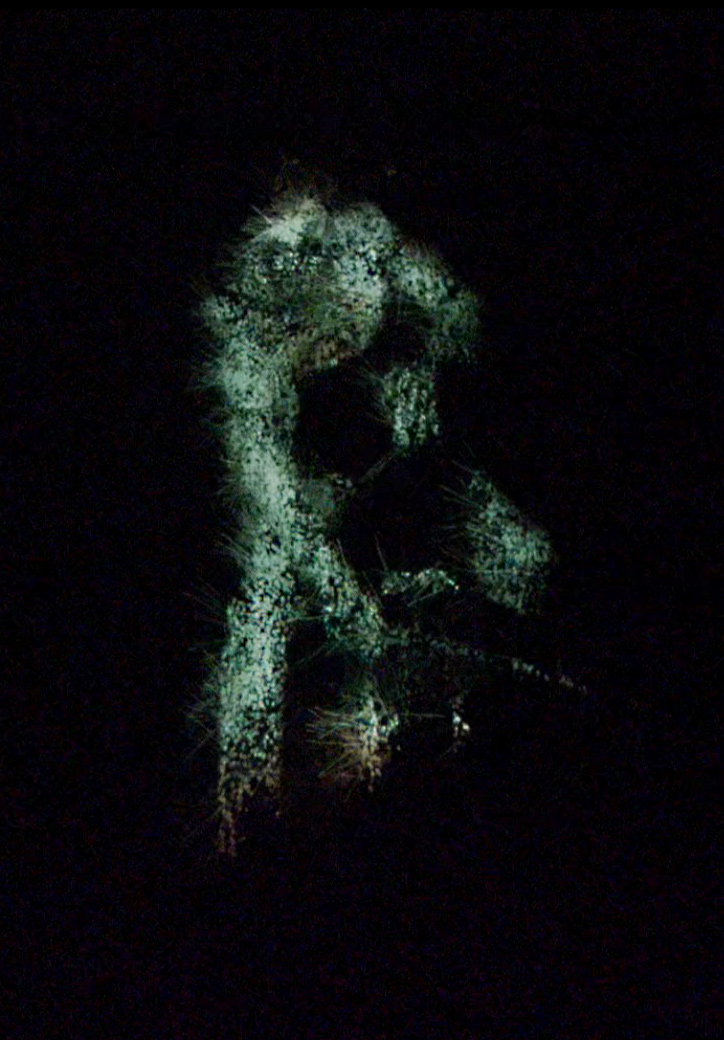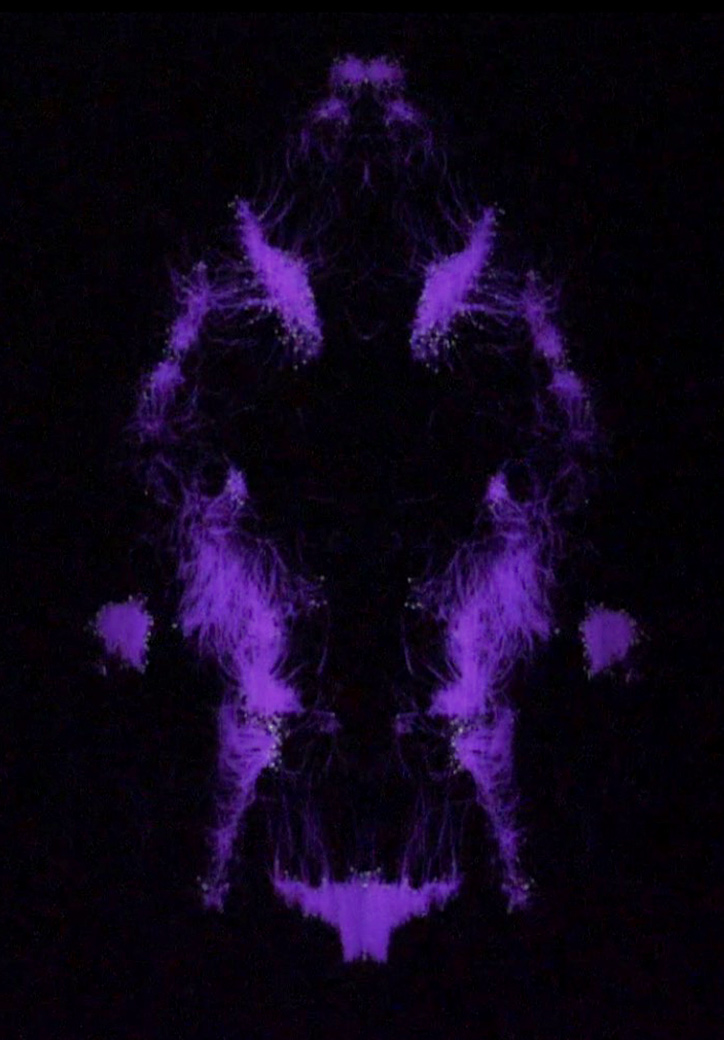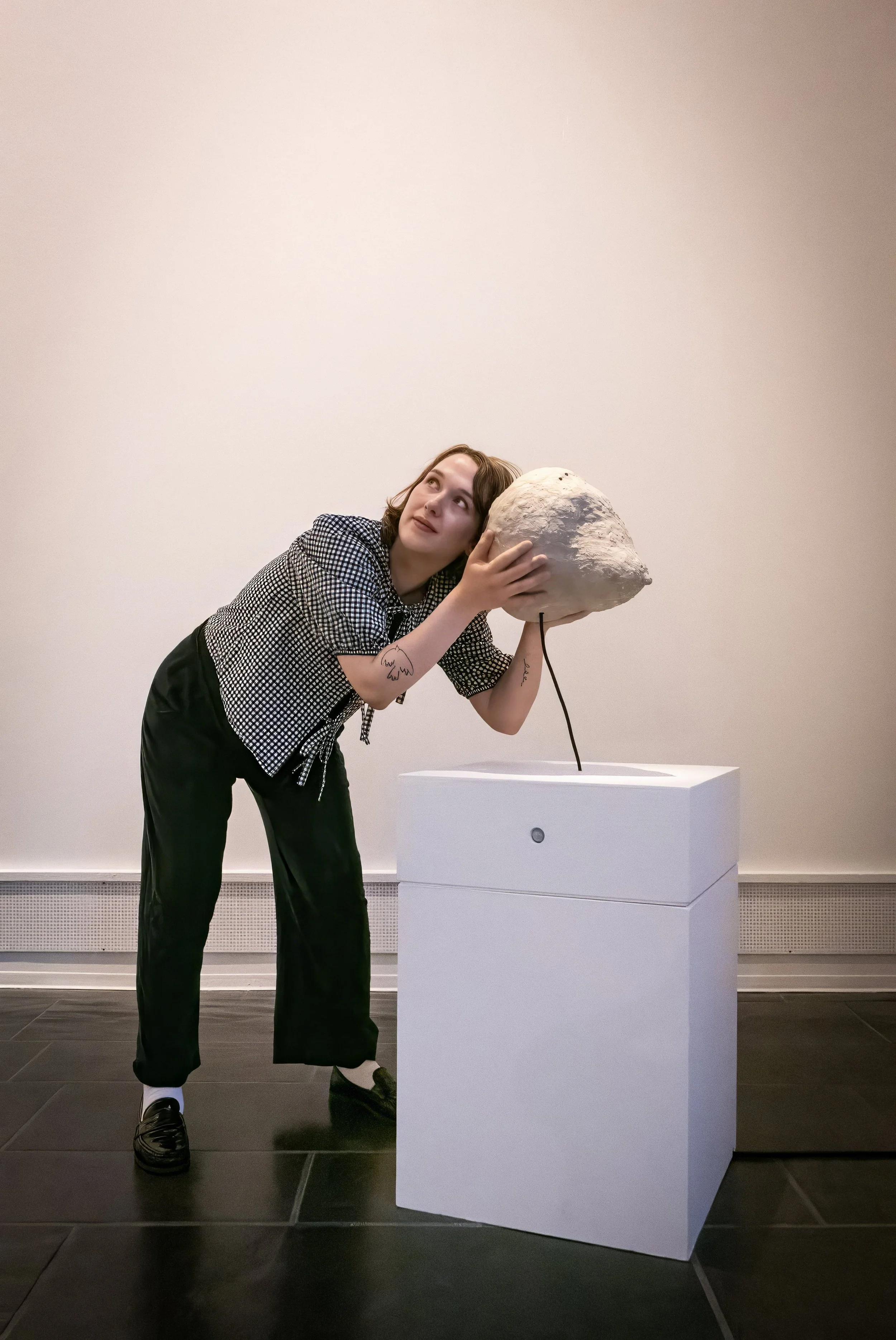For this project, we were tasked to design a new winter retreat on the snowy slopes of Sjusjøen, a popular cross-country skiing resort close to Lillehammer, Norway.
Our clients — a family of five — wanted to create a place to gather their extended family and friends for winter vacations and celebrations, accommodating up to three large families simultaneously — up to 16 people.
Unusually, when our clients approached us, they had already selected a contractor to prefabricate and erect their future cabin, using the traditional log house technique. As they were not satisfied with their existing design solutions, they asked us to develop a custom design, tailored to their specific needs, which would also follow the contractor’s prefabricated construction method.
At the centre of our design, the large kitchen and the sunken fireplace lounge act as the two main gathering places, where guests can congregate around the main focal points of the cabin: the communal dining table and the large open fireplace. In contrast, each family enjoys its own private accommodation wing, branching off from these main spaces, with the sleeping quarters tucked away from the vibrant social rooms.
Between these two extremes, we intentionally convoluted the internal circulations to create gradients of privacy and strings of informal sitting spaces along them, where guests could interact throughout the day, but also giving opportunities for more quiet, private activities.
Each wing can be used independently, so that the effective size of the cabin can easily be adapted to the number of guests.
While the interior of the cabin is intricate and spacious, its exterior maintains the compact aesthetics and typology of traditional log architecture — with its multiple interconnected volumes cascading down the sloped site, each visually expressing the different functions of the spaces they enclose.
Three distinct outdoor spaces are tucked around the wings of the building, anchoring further the cabin onto the site: the sheltered main entrance on the north side with access to ski storage, a sunny south courtyard linking the dining space to the open views, and a private terrace to the west, on which an outdoor bath can be enjoyed in the evening sun.
Our design served as the basis for the detailing and production of the hand-sawn logs that were produced and installed on site by the specialist contractor. The result is a very personal cabin, perfectly suited to the needs of its owners and embracing the tradition of Nordic log construction.








